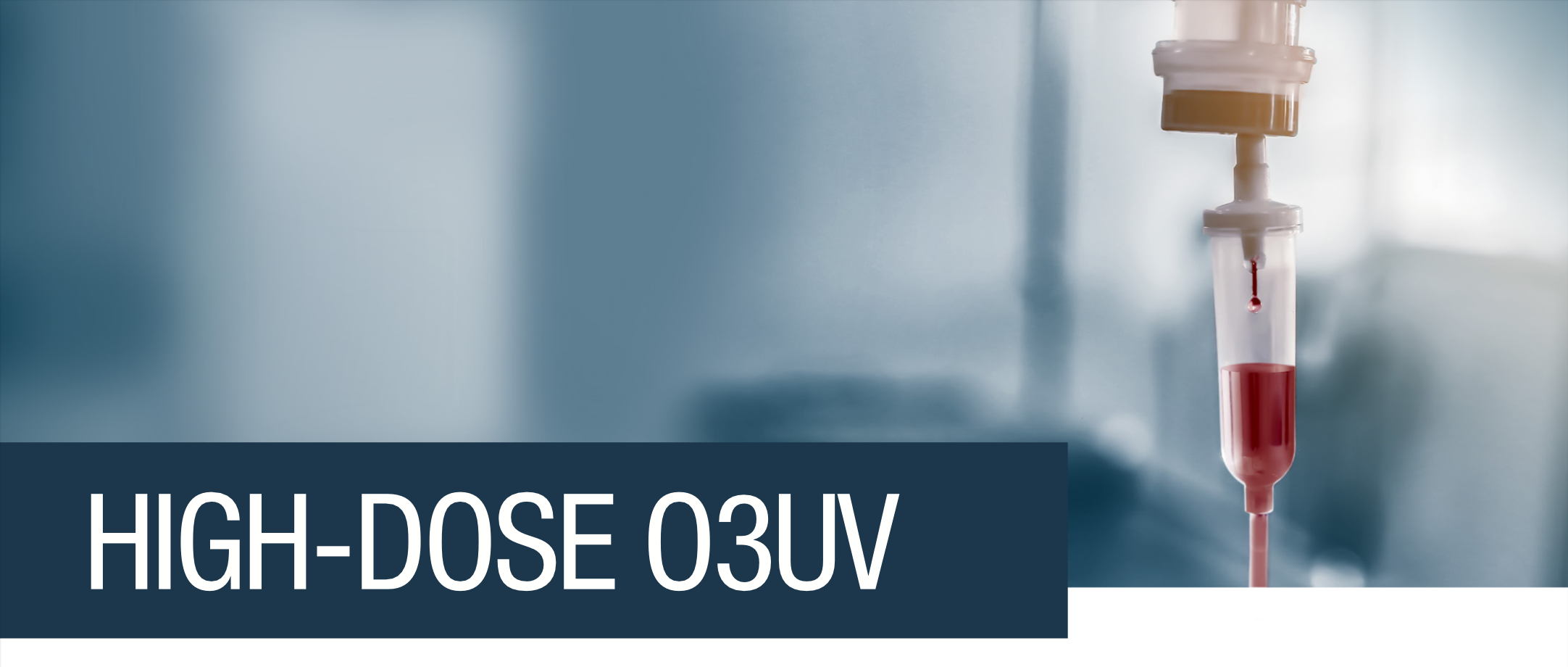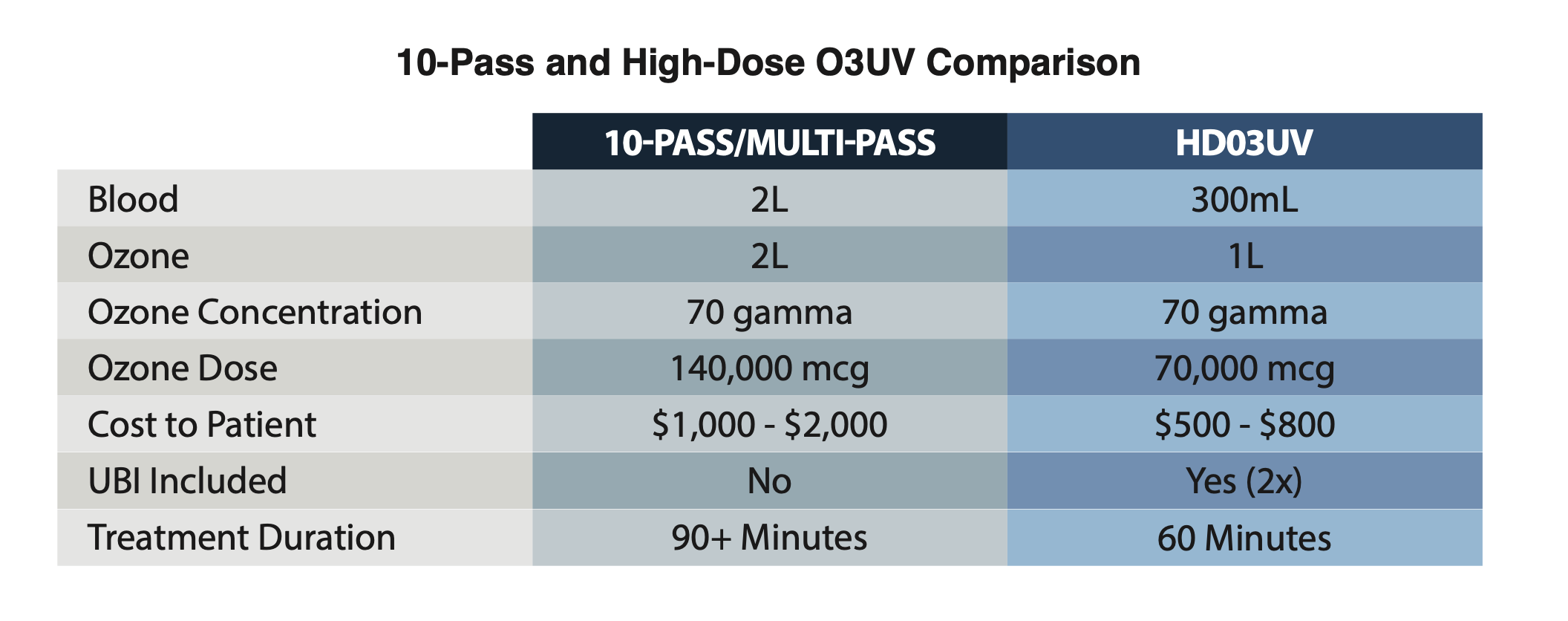If you are part of the ozone world either as a practitioner or patient, you have most likely been hearing all sorts of chatter about “high dose ozone.” Sometimes this is called high dose, and sometimes it is referred to as 10-pass or multi-pass. And if you have already experienced ozone, you know what a fantastic tool it can be to treating disease, anti-aging, and athletic performance. So if a little bit has good results, then more is better, right?
To talk about high doses of ozone, we must first understand what a low-dose is and realize the differences. Many clinics worldwide use ozone differently, and many international organizations on ozone disagree on how to dose ozone specific indications. There is the rectal application, an IV application, and a multitude of others. We will be focusing on the IV doses of ozone.
Major Autohemotherapy (MAH) is the general treatment for delivering the standard doses of ozone and differs depending on the country. Generally, 2400-14,000 micrograms of ozone are combined with a patient’s whole blood and administered intravenously.
Research going back 60 years states that these doses are safe and effective, whether administered rectally, vaginally or intravenously. Even the FDA approved the dosage through Phase II trials. Most ozone groups agree that clinically, ozone is 40- 85% effective across a broad range of conditions, symptoms, and applications, whether it is wound- care, joint conditions, cardiovascular disease, or bacterial/viral conditions.
There has been a new movement rising to test and administer higher doses of ozone, reaching up to 140,000 micrograms in a single treatment. Generally, a German ozone device gives the dosage by pulling blood from the patient, infusing ozone, and re- administering the now ozonated blood ten times. Hence the name 10-Pass or Multi-Pass.
Many ozone experts, such as Robert Rowan and Howard Liebowitz, MD, use the German device and technique. However, the SOPMed group pioneered an alternative version that allows for an automated system to draw less blood than the 10-pass but offers 70,000 micrograms of ozone in one “pass.” We call this HDO3UV.
If we make a direct comparison, one drawback to
the 10-Pass is that it does not include ultraviolet light as with many standard dosed ozone IV treatments (like MAH). Ultraviolet light is critical. A large study indicates that ozone is more effective when combined with UV light therapy. Therefore, the HDO3UV treatment includes ultraviolet light, not for only one pass, but two passes, labeling it a “high dose”
amount in addition to the 70,000 micrograms of ozone. The treatment session lasts about an hour.
Practitioners around the U.S. safely administered and completed more than 7,400 HDO3UV treatments and about 750 more each month, with great success. Most clinicians have amazing stories of improvement in even the toughest of their cases without some of the detoxing symptoms that can come with a ten-pass treatment.
SOPMed has exhaustingly tested HDO3UV and found that the amount of blood drawn can absorb and utilize the amount of ozone and ultraviolet light infused
into it, allowing for high-uptake while simultaneously keeping blood cells intact.
Don’t get left behind. If you are interested in this
high dose therapy, please ask your ozone provider. We recommend that you do not initiate your ozone therapy with a high dose treatment, but instead, start with the lower doses of ozone first, then titrating your dose up until you reach a point to which high-dose is the next obvious step.
We do not recommend administering high doses
of ozone at home. The home ozone units are spectacular for rectal, vaginal, skin treatments but should stay within the lower dosage ranges. High- dose is only safe when administered through IV by a certified ozone practitioner.


